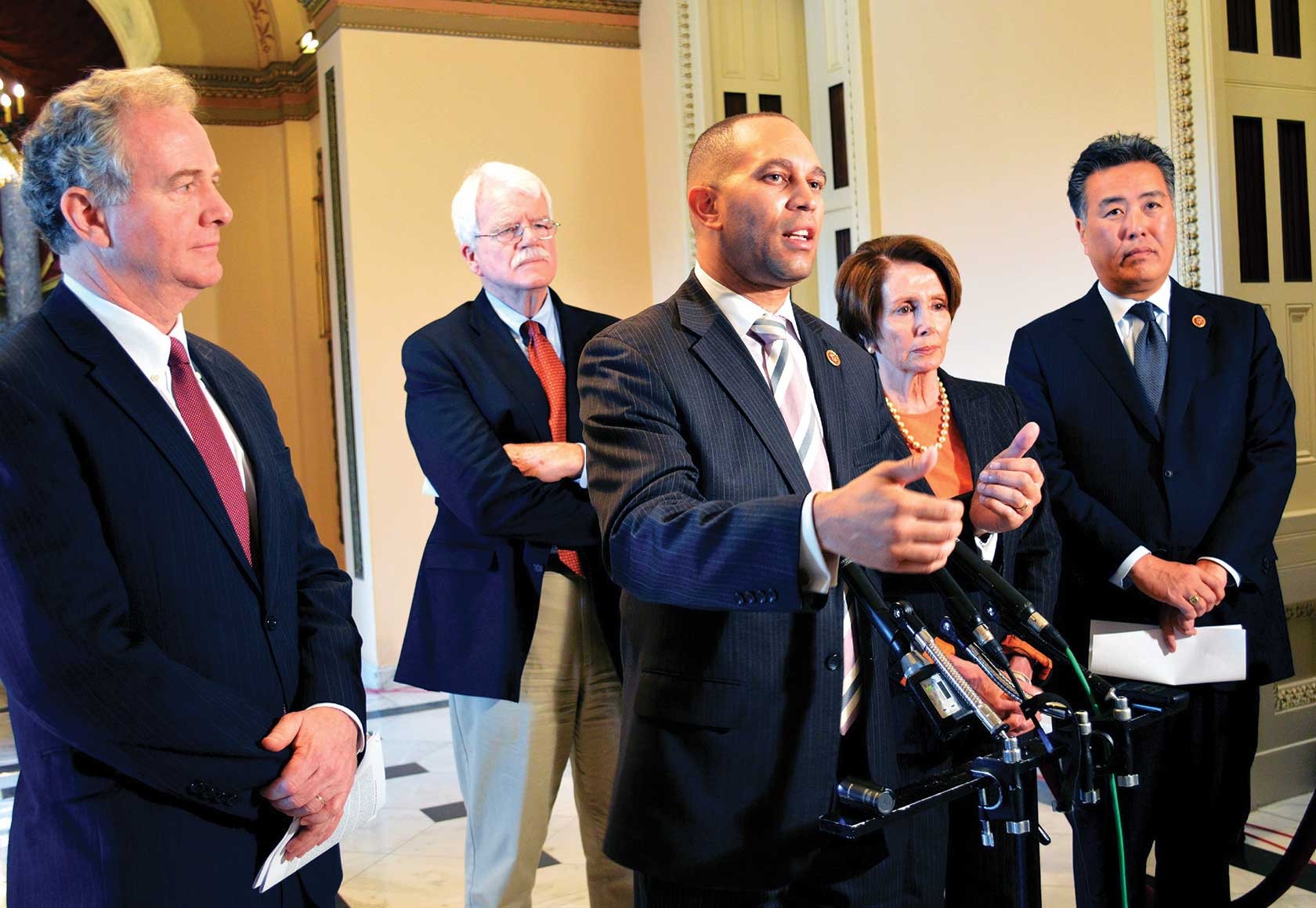Democrats in New York are facing a critical decision regarding the state’s congressional map. After spending significant time and resources in court to redraw the map, they must now decide whether to accept the modest changes recommended by the bipartisan redistricting commission or take control of the mapmaking process themselves.
The choice before them could have far-reaching implications for the national battle for the House, as even minor adjustments could impact several swing seats from Long Island to Syracuse.
By rejecting the bipartisan proposal and making their own changes, Democratic lawmakers could potentially stack the deck against Republicans in these key districts.

New York Democrats (Credits: The Bay State Banner)
However, any changes made must adhere to the state’s Constitution, which prohibits partisan gerrymandering. Democrats argue that any adjustments they make would be aimed at reuniting communities of interest split between districts, rather than partisan advantage.
The complexity of the situation is evident in the reluctance of key lawmakers, including State Senate Majority Leader Andrea Stewart-Cousins and Assembly Speaker Carl E. Heastie, to comment on the matter. Representative Hakeem Jeffries, seen as influential in the process, has also remained silent.
The current situation echoes the challenges Democrats faced in 2022 when their attempts at redistricting led to a legal battle and ultimately benefited Republicans. Now, with new legal challenges looming, Democrats must carefully navigate the mapmaking process to avoid similar pitfalls.
The decision before New York Democrats underscores the high stakes involved in redistricting and the delicate balance between political interests and legal constraints. As they weigh their options, the outcome could have a significant impact on the balance of power in Congress.























